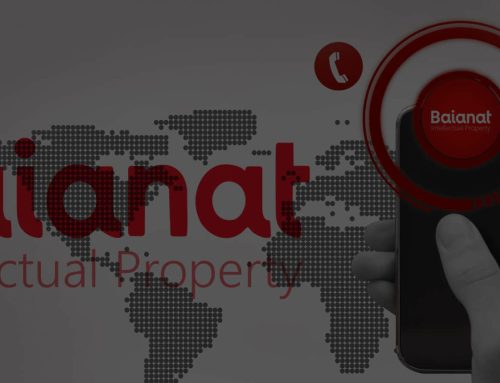Intellectual property (IP) rights law in Canada is designed to protect the creations of the mind, including inventions, literary and artistic works, and symbols, among others. The following are the main types of IP rights in Canada:
- Patents: A patent is a legal protection granted by the Canadian government to inventors for new and useful inventions. A patent gives the inventor the exclusive right to make, use, and sell the invention for a certain period of time.
- Trademarks: A trademark is a symbol, design, word, phrase, or combination of these elements that identifies and distinguishes the goods or services of one business from those of another. Trademarks in Canada are registered with the Canadian Intellectual Property Office (CIPO).
- Copyright: Copyright protection in Canada applies to original literary, artistic, musical, and other creative works, including books, paintings, music, and software. Copyright protection is automatic upon the creation of the work and lasts for the life of the creator plus 50 years.
- Industrial Designs: An industrial design protects the visual aspects of an article, such as its shape, configuration, or pattern. Industrial designs in Canada are registered with CIPO.
- Trade Secrets: A trade secret is confidential information that provides a business with a competitive advantage. Trade secrets can include formulas, designs, or customer lists. There is no formal registration process for trade secrets in Canada, but businesses can take steps to protect their confidential information, such as using non-disclosure agreements.
In Canada, IP rights are enforced through civil litigation. If someone infringes on your IP rights, you can take legal action to stop the infringement and seek damages. It is important to work with a legal expert to ensure proper protection and enforcement of your IP rights in Canada.
Intellectual Property Law problems and issues in Canada
Like in other countries, intellectual property law in Canada faces a number of problems and issues. Some of the main ones include:
-
Counterfeiting and piracy
Counterfeiting and piracy are major problems in Canada, particularly in relation to trademark and copyright infringement. Counterfeit goods, including clothing, electronics, and pharmaceuticals, are often sold through online marketplaces and physical stores, causing significant economic harm to businesses.
-
Patent trolls
Patent trolls are entities that acquire patents solely for the purpose of licensing them or suing other businesses for infringement. In Canada, there have been concerns that patent trolls are stifling innovation and imposing unnecessary costs on businesses.
-
Access to medicines
Canada has a system of compulsory licensing, which allows generic drug manufacturers to produce and sell copies of patented drugs in certain circumstances. However, there have been concerns that the system does not strike the right balance between protecting intellectual property rights and ensuring access to affordable medicines.
-
Indigenous intellectual property
Indigenous peoples in Canada have expressed concerns that their traditional knowledge and cultural expressions are being appropriated without their consent or compensation. There have been calls for greater recognition and protection of Indigenous intellectual property rights.
-
Copyright reform
Canada has undergone a number of changes to its copyright laws in recent years, including the introduction of new exceptions and limitations for educational use and the expansion of fair dealing rights. These changes have been controversial and have raised concerns about the balance between protecting copyright owners’ rights and ensuring access to information and creative works.
Overall, intellectual property law in Canada is complex and evolving, and it is important for businesses and individuals to stay up-to-date with the latest developments and work with legal experts to protect their rights and interests.
after knowing about Intellectual Property Rights Law in Canada .. read more on baianat IP
how to prevent patent infringement
how to protect intellectual property in canada ?
There are several steps you can take to protect your intellectual property (IP) in Canada:
-
Conduct a search
Before applying for IP protection, it is important to conduct a search to ensure that your invention, trademark, or design is not already protected by someone else’s IP rights.
-
File for protection
Depending on the type of IP, you can file an application for protection with the Canadian Intellectual Property Office (CIPO). For patents, trademarks, and industrial designs, you can file an application online through the CIPO website. Copyright protection is automatic upon the creation of the work.
-
Maintain your IP rights
It is important to maintain your IP rights once they are granted. For patents and trademarks, you will need to pay maintenance fees to keep your rights in force.
-
Monitor for infringement
Regularly monitor the marketplace for infringement of your IP rights. If you identify infringement, take legal action to protect your rights.
Use contracts: Use contracts, such as non-disclosure agreements and licensing agreements, to protect your IP and control how it is used by others.
-
Educate employees and partners
Educate your employees and partners on the importance of IP protection and ensure that they understand the company’s policies and procedures.
-
Work with legal experts
Work with legal experts who can help you navigate the complex landscape of IP protection and enforcement in Canada.
Overall, protecting your intellectual property in Canada requires a proactive approach and a willingness to invest in the necessary time and resources to secure your rights.
after knowing about Intellectual Property Rights Law in Canada .. read more on baianat IP
ip intellectual property portfolio management
How to protect your product from being copied
how to register intellectual property in canada ?
To register intellectual property (IP) in Canada, you will need to follow the specific registration process for the type of IP you are seeking to protect. The following are the general steps to register IP in Canada:
-
Conduct a search
Before applying for IP protection, conduct a search to ensure that your invention, trademark, or design is not already protected by someone else’s IP rights.
-
Choose the appropriate application form
There are different forms for each type of IP, For example, if you want to register a trademark, you will need to complete the appropriate application form for your desired mark.
-
Complete the application form
Complete the application form for the type of IP you are seeking to protect, providing all required information and supporting documentation.
-
Submit the application
Submit the completed application and pay the required fees to the Canadian Intellectual Property Office (CIPO).
-
Wait for examination
The application will be examined by CIPO to determine whether it meets the requirements for registration.
-
Respond to objections
If the application is objected to by the examiner, you will need to respond to the objections and provide additional information or documentation as requested.
-
Registration
If the application is approved, your IP will be registered and you will receive a certificate of registration.
It is important to note that the registration process and requirements vary for each type of IP, and working with a legal expert can help ensure that you complete the application correctly and maximize your chances of success.
Baianat Intellectual Property
Our Mission
Assisting our clients in protecting and securing their businesses and their tangible and intangible assets, raising awareness of intellectual property concepts and establishing the importance of its role in protecting all rights.
after knowing about Intellectual Property Rights Law in Canada .. read more on baianat IP








